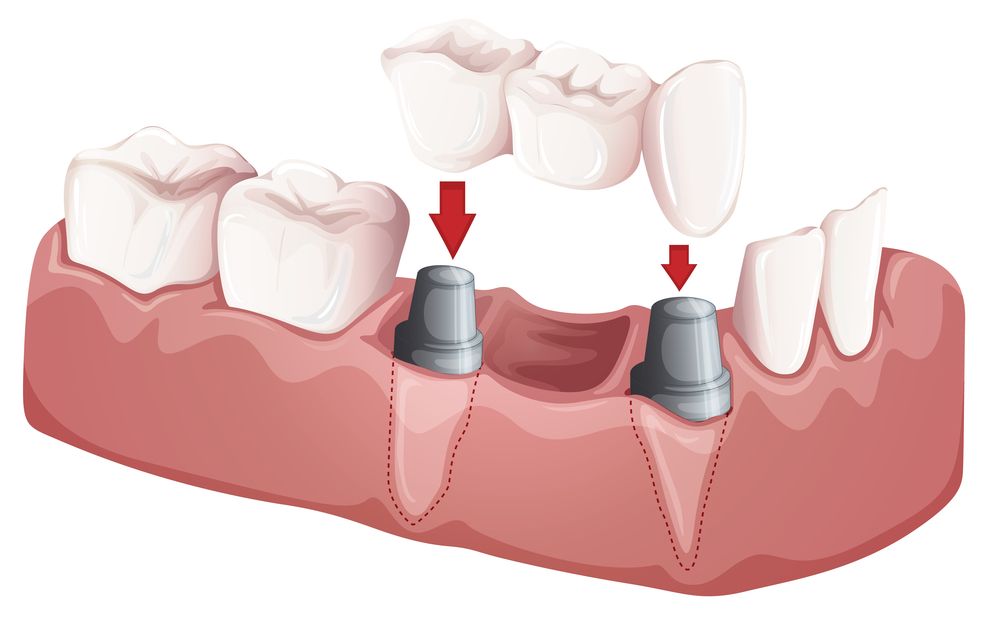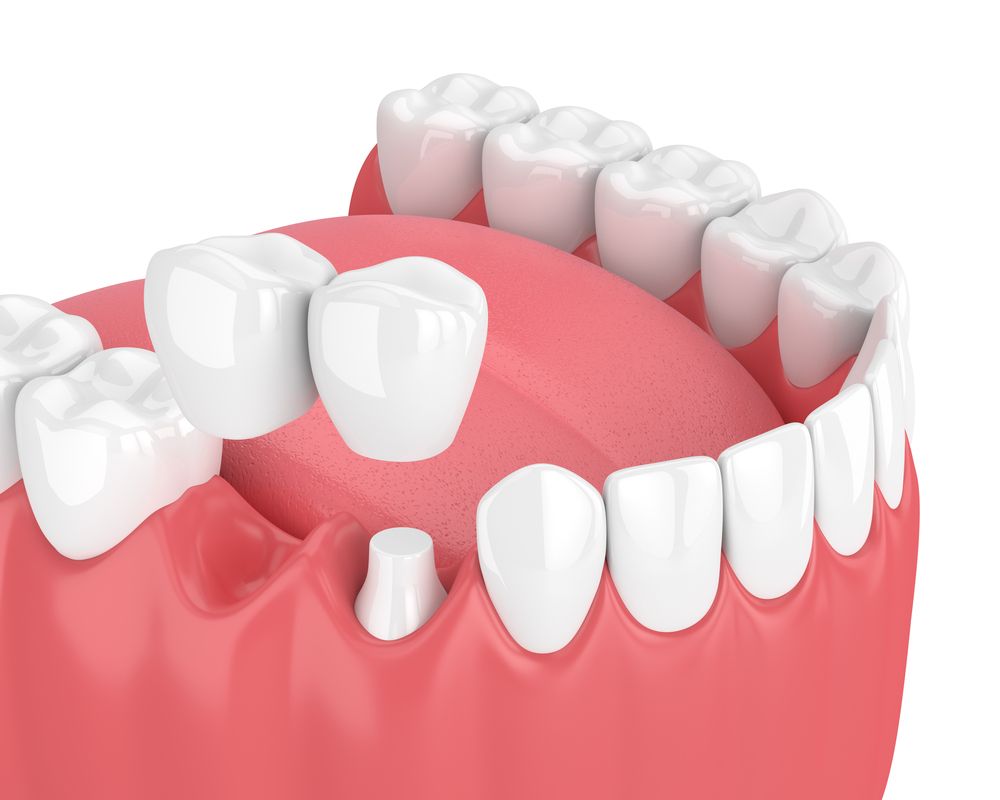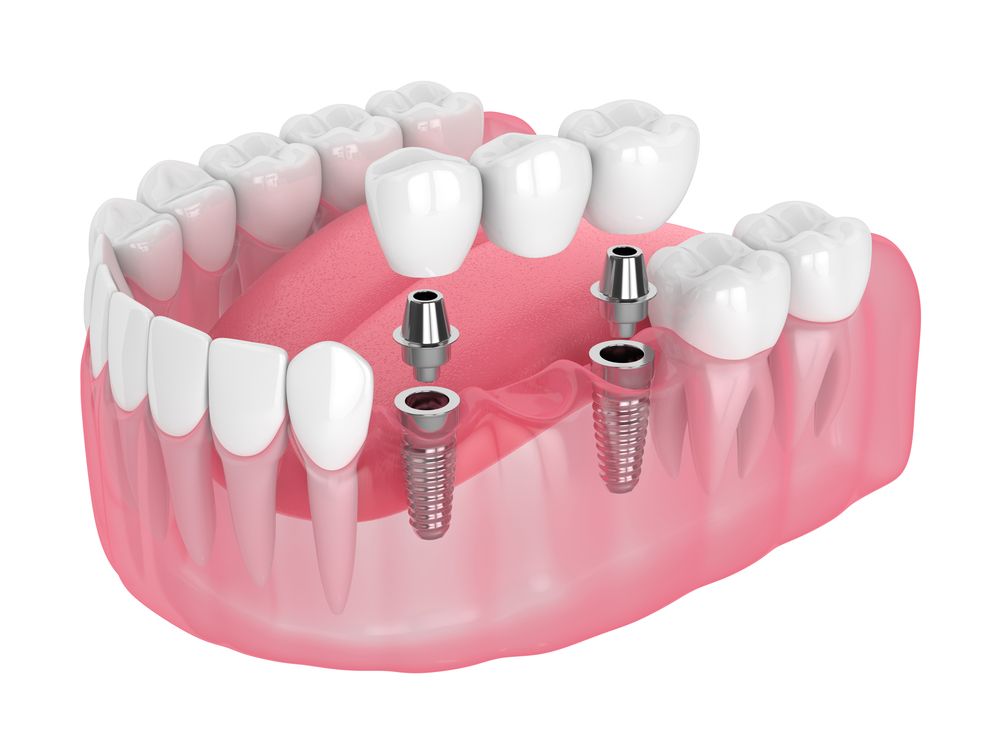Dental Bridges in Toronto
If you lose one or more teeth, the resulting gap will change the shape of your jawbone around that area over time and eventually cause the jawbone to shrink. The skin around the area can also sink in.
Dental bridges are an effective solution to this problem. They replace missing teeth restoring appearance and function with a complete and natural-looking smile.
You can have high-quality dental bridges installed in Toronto at the Little Green Building. You can click here to book an appointment.

What is a Dental Bridge?
Dental bridges can be defined as tooth prosthetics fitted on patients with missing teeth. Bridges use existing teeth as support to replace a missing tooth or teeth. They are fixed dental appliances, meaning they aren’t removable once installed.
Bridges are also a conservative option composed of dental crowns fitted over natural adjacent teeth known as abutment teeth (on either side of the tooth gap). They also contain artificial tooth/teeth that “bridge the gap”.
Types of Bridges
There are several types of dental bridges, the most notable being:
a. Traditional Dental Bridges
These are the most common types of bridges consisting of crowns (on both ends) and a false tooth or artificial tooth in between. Traditional bridges are best used when a patient has naturally stable teeth on either side of their gap.


b. Cantilever Dental Bridges
Cantilever bridges resemble traditional bridges but only differ because they feature one crown on one end (not both ends). This type of bridge is recommendable when a patient has healthy natural teeth on one side only (as opposed to both sides of a gap). As a result, cantilever bridges may not be as strong as traditional dental bridges.
c. Implant-Supported Bridges
As the name suggests, implant-supported dental bridges attach to dental implants as opposed to natural teeth. They are recommendable when a patient doesn’t have any healthy natural teeth near a gap. They are also ideal for larger tooth gaps i.e. 3 or more missing teeth (in a row) and/or when there is a high rate of bone loss.


d. Maryland Dental Bridges
Resin-bonded bridges or Maryland bridges are secured in place using metal wings instead of dental crowns. The “wings” are bonded to the back of neighbouring teeth. These types of bridges are common when replacing missing front teeth.
Bridges can also be classified by material i.e., porcelain core, porcelain finish, etc.
Different types of bridges will work perfectly for different scenarios. Come by our office and let us evaluate the best option for you. Let our dentist – Dr. Michael Paltsev (with 30+ years of experience) and his able dental team help you choose the right dental bridges. Contact Dr. Paltsev now.
Benefits of Dental Bridges
If you have a missing tooth/teeth, dental bridges will offer the following benefits:
✔️ Restore proper chewing function
✔️ Restoring speaking capabilities (if affected)
✔️ Prevent teeth shifting
✔️ Safeguard bone health/restore your appearance (by eliminating the sunken skin look/shrinking jawbone around the area with a lost tooth)
✔️ Improve your oral health (since it’s hard to clean teeth gaps properly)
✔️ Prevent aged appearance
Dental Bridge Cost in Toronto
The cost of tooth bridges depends on factors like the size of the bridge, and how many teeth the bridge is replacing. The longer the bridge the more expensive it will be. For an accurate cost, contact us or come to the office.
How Long Does a Dental Bridge Last?
Like dental crowns, our bridges are designed to last a lifetime. However, since bridges consist of crowns, whatever happens to the supporting teeth, such as tooth decay, can prompt a change in bridge placement. Other factors dictating longevity include proper care and good dental health. For instance, a routine exam is recommended yearly.
Our Process: How Dental Bridges Are Installed at the Little Green Building
There are several types of dental bridges, the most notable being:
Step 1: Booking an Appointment
If you have a missing tooth/missing teeth and want to know if you are a good candidate for bridges, start by booking an initial dental bridge consultation with us!
Step 2: Preparing Abutment Teeth and Taking Dental Impressions
This step applies when having traditional or cantilever dental bridges installed. The abutment teeth (real teeth that will support the bridge) usually need to be prepared. The process involves removing some tooth enamel.
Some dental impressions are taken initially and after abutment teeth have been prepared to ensure the creation of perfectly fitting bridges.
Step 3: Making of the Custom, Natural-Looking Bridge
With impressions taken of the adjacent and prepared teeth, we can make perfectly fitting bridges. Although this depends on the type of bridge being made, it may require another appointment for implant-supported bridges where patients must have dental implants installed first and then wait for healing. In such dental restorations, patients can get temporary bridges.
Step 4: Fitting
When your bridge is ready, we’ll simply fit it permanently using dental cement to restore your beautiful smile. Our patients also get information on ideal oral hygiene practices to ensure their permanent bridges serve them perfectly for decades.
For more details on our tooth bridge process and options, book a consultation with us. You can also call 416-769-8135 or email: littlegreenbuilding@gmail.com for other dental issues requiring cosmetic dentistry.
Find out about all-porcelain bridges, other bridge materials, and bridge types i.e., 3-unit bridges, three-tooth bridges, conventional metal-based ceramic bridges, and much more.
